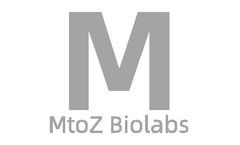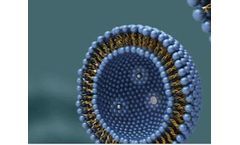Drug Carrier Articles & Analysis
21 articles found
The main focus of drug carrier research today is to identify carriers that are both safe and effective for clinical treatment applications. ...
Most of the old drugs are currently limited in their effectiveness because of poor pharmacokinetics, simple clearance by the body and cytotoxicity. Nanoparticle technology in particular, Nano drug delivery system is getting a lot of attention and application in medicine in the recent years. Since it is small (1100nm), targets well, and stays in the circulation ...
Biomedical ResearchIn tissue engineering and regenerative medicine, understanding the molecular weight of collagen helps design suitable biomaterials.2. Drug DevelopmentInformation on the molecular weight of collagen is crucial for developing strategies that use collagen as a drug delivery carrier.3. ...
In addition, carboxylic acid PEGs can be involved in regulating interactions with cells, such as fusion with cell membranes and cellular uptake, providing effective carriers for cell therapy and gene delivery. Applications of PEGs and Carboxylic Acid PEGs Drug Delivery PEG and its carboxylic acid derivatives have important applications in drug ...
PLGA has good biocompatibility, biodegradability, mechanical strength, good plasticity, surface modification, and drug encapsulation. It has a wide range of uses in the field of biomedical engineering and has been used in drug sustained-release carriers, artificial catheters and tissue engineering scaffold materials. As a drug ...
Recombinant human collagen, a natural biosynthetic material with good biocompatibility, low immunogenicity, degradability and absorbability, has been widely used in hemostasis, wound healing, drug slow-release carrier and tissue process. And it can be processed by electrospinning technology. ...
In this article, we will explore different types of nanoparticle development that are revolutionizing drug delivery systems. Polymer Nanoparticles for Drug Delivery Polymer nanoparticles are a popular choice for drug delivery systems due to their biocompatibility and versatility. ...
Kangle anti-brittle capsule: innovative drug carrier based on patented technology In the field of pharmaceutical preparations, capsules are a common drug carrier, and their integrity and stability are crucial to ensure the effectiveness of drugs. ...
Liposomes, as drug carriers, provide a superior solution for maintaining or enhancing the efficacy of chemotherapy while reducing the severity of reactions and side effects. Classification When the surface of the liposome is modified, the properties of the liposome can be changed to control the release of the internal drug, to achieve better ...
Over the years, several innovative drug delivery systems have been developed to improve drug efficacy and patient outcomes. ...
With the deepening of the research on the three-dimensional structure, binding characteristics and stability of biotin and avidin, the application of BAS and its related technologies in a variety of automated immunoassay techniques has further promoted the development of sensitive, rapid and accurate determination techniques for some trace substances in plasma and body fluids such as small ...
Nanotechnology has not only received attention and applications in the field of drug delivery, but also has achieved many successes in the field of tissue engineering. ...
This article aims to provide an overview of different bioconjugation strategies employed for various drug classes, highlighting their advantages, challenges, and potential applications Bioconjugation involves the covalent linkage of drugs or drug carriers to biological macromolecules, thereby enhancing their stability, ...
Once injected into the body, microspheres are gradually degraded in the body, allowing the drug to be released slowly at a certain rate, maintaining the drug concentration in the blood at the site of the lesion, thereby prolonging the half-life of the drug and achieving long-acting sustained release. ...
In addition to the common applications mentioned above, here we pay more attention to innovative applications of hydrocolloids, such as drug delivery, 3D food printing, and biodegradable materials. l Hydrocolloids in Drug Delivery Applications Hydrocolloids have been increasingly studied in the fabrication of nanocarriers for controlled and targeted ...
Macromolecule/high polymers can be used in surgery, suture, orthopedic fixation and tissue repair. They can also be used as drug carrier materials in drug controlled release systems. According to relevant researches, the following describes the important applications of several common polymers in medicine science. 1 Surgical suture Due to its ...
At the same time, due to the cationic properties of its surface, it can also form polyelectrolyte complexes with polyelectrolytes with anions on the surface. Nano-Drug Carrier of Chitosan Nano-drug carriers generally refer to drug carriers whose particle size is in the nanometer size (1-100 nm) ...
The main areas of application for sucrose-based polymers focus on drug release formulations. In the field of drug release, the hydrophilicity of drug carrier materials is an important factor affecting drug efficacy. ...
Pharmaceutical excipients have important functions such as serving as carriers, improving drug stability, solubilization and slowing down the drug release. ...
Recently, Yang Hui, a researcher at Shenzhen Institute of Advanced Technology, Chinese Academy of Sciences, developed a nanofluidic chip technology to achieve high-throughput preparation of exosome drug carriers and experimentally verify the anti-tumor effect of novel exosome drug carriers. ...








